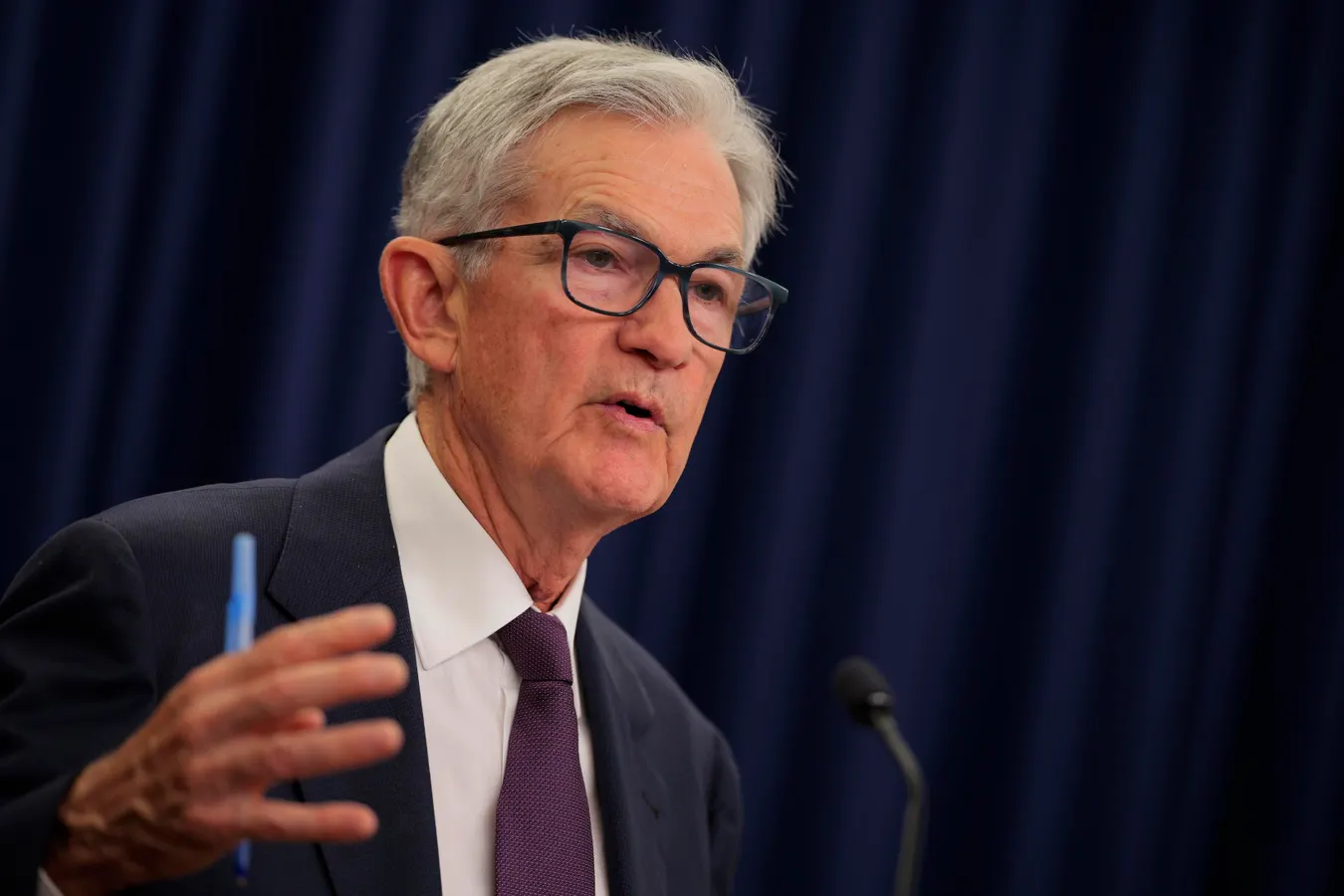By Chip Somodevilla,Rohit Arora,Senior Contributor
Copyright forbes

WASHINGTON, DC – Federal Reserve Chair Jerome Powell speaks during a news conference following a two-day meeting of the Federal Open Market Committee at the Federal Reserve on Sept.17, 2025. In the face of a softening labor market, Powell announced a quarter-point cut to the federal funds rate, bringing rates down to a new range of 4 percent to 4.25 percent. (Photo by Chip Somodevilla/Getty Images)
Getty Images
Facing Pressure from Trump and a Weakening Employment, Federal Open Market Committee (FOMC) Lowers Federal Funds Rate
After months of speculation and intense pressure by President Trump, Federal Reserve Chair Jerome Powell announced on Wednesday, Sept. 17, that the central bank would cut interest rates by 25 basis points. The federal funds rate is now in the 4.00%-4.25% range. It’s the first rate cut by the central bank this year.
Powell reiterated that the Fed has two mandates: a target inflation rate of 2% and full employment. Since Donald Trump returned to the White House, Powell has resisted lowering interest rates despite constant calls from the president to do so.
Related: Trump Issues ‘Big’ Fed Prediction
At his press conference in Washington, DC, Chair Powell said that economic activity has moderated and that job gains have slowed. Meanwhile, inflation has moved up and remains somewhat elevated.
The Consumer Price Index (CPI) rose 2.9% in August 2025 from a year earlier, the Bureau of Labor Statistics reported on Thursday, Sept. 11. The figure increased 0.4 percent from July on a seasonally adjusted basis after having risen 0.2 percent in July. This marked the highest monthly inflation since January.
MORE FOR YOU
However, the Fed apparently focused on the disappointing Jobs Report issued on Friday, Sept. 5, that indicated total nonfarm payroll employment changed little in August with just 22,000 jobs created, and it has shown little change since April. The slowing job growth and the constant battles with Trump appear to have outweighed the bump in the inflation rate when the Fed made its decision. In fact, the Fed governors indicated that there could be one or two more interest rate cuts coming in 2025.
This action is not without risk. For instance, if inflation continues to rise and goes over 3% next month, lowering rates could result in even higher inflation. Chair Powell has cited inflation along with tariff uncertainty as the reasons why he had resisted lowering rates. However, thus far, the costs of the tariffs have primarily been absorbed by middlemen, rather than manufacturers and consumers.
Positive Impacts Lower Interest Rates for Small Business Owners
1. Cheaper borrowing
Lower interest rates certainly helps entrepreneur who are ready to reinvest in their companies for equipment or expansion. A lower cost of capital on small business loans, which are often variable rate small business loans, will enable small companies that have borrowed money to save on their cost of capital. The rate cut reduces the cost of small business loans, business lines of credit, and business credit cards.
2. Improved Cash Flow
Lower monthly payments on debt service eases monthly expenditures. Businesses with floating-rate loans (common for business lines of credit) now will see lower monthly payments, thereby freeing up cash for operations, marketing, and other needs.
3. Potential of Higher Consumer Demand
Lower interest rates mean cheaper mortgages, auto loans, and cost of capital credit, which can increase consumer spending.
4. Investment Incentives
Lower interest rates help spur investments in commercial real estate, new equipment, and upgrades in technology, including AI.
Who Are The Winners from the Fed’s Rate Cut
Among the biggest winners from today’s announcement of lower interest rates is the Manufacturing & Construction industry, which will benefit from lower financing costs. One thing to watch will be whether input costs rise because of tariffs. Housing sales have slumped in some sections of the country, including Florida, which experienced unsold inventory due to overbuilding and slowing demand this year. Lower interest rates can bring down housing prices, which should help home builders.
Wednesday’s announcement by the Fed could bring lots of positives for small businesses that are looking to expand to new locations and for the Commercial Real Estate (CRE) industry. The lower cost of capital has the potential to embolden entrepreneurs who have been sitting on the sidelines waiting for interest rates to be cut by the Fed. With lower rates in place, business owners should be more willing to apply for commercial real estate loans for land and building acquisitions.
Further, existing CRE owners with variable rate loans can expect lower payments for debt service, which will positively impact their cash flow. Businesses with high fixed rate loans can look to refinance.
Along those lines, if Residential Real Estate picks up, it can result in a better forecast for home improvement stores, handymen, property management firms, real estate brokers.
Retailers also are in a position to reap the benefits of lower interest rates. If mortgages, auto loans, and credit card rates go down, consumers will have more disposable income to spend. This is good news as the holiday season approaches.
Discretionary spending often rises when borrowing costs go down. As consumer confidence improves, restaurants, bars, hotels, and event venues are likely to benefit, as will gyms, beauty salons, and other service providers.
The FOMC Could Continue to Lower Rates This Year
Recent indicators suggest that growth of economic activity moderated in the first half of the year, job gains have slowed, and the unemployment rate has edged up but remains low. Inflation has moved up and remains somewhat elevated.
The Federal Open Market Committee (FOMC) consists of 12 members — the seven members of the Fed’s Board of Governors; the president of the Federal Reserve Bank of New York; and four of the remaining 11 Reserve Bank presidents, who serve one-year terms on a rotating basis. The decision to lower interest rates by .25% was nearly unanimous.
Chair Powell, Vice Chair John Williams, Michael S. Barr, Michelle Bowman, Susan Collins, Lisa Cook, Austan Goolsbee, Philip Jefferson, Alberto Musalem, Jeffrey Schmid, and Christopher Waller. The sole dissenting vote came from Stephen I. Miran, a recent appointee to the Fed Board, who previously served as Chair of the Council of Economic Advisers under President Trump. Miran wanted the federal funds rate slashed by 50 bps.
WASHINGTON, DC – Stephen Miran, the recent Chair of the Council of Economic Advisors, is sworn in prior to testifying before the Senate Banking, Housing and Urban Affairs Committee Sept. 4, 2025 in Washington, DC. President Trump nominated Miran to be a member of the Board of Governors of the Federal Reserve System. (Photo by Win McNamee/Getty Images)
Getty Images
Related:Despite Trump’s Pressure, Fed Holds Interest Rates Steady
The FOMC has two more scheduled meetings in 2025. The next one will be October 28-29, and the final meeting of the year will be December 9-10. We can expect the Fed to examine the impact of the current rate cut, inflation, consumer spending, and the job market to determine if the central bank will lower interest rates again this year.
Editorial StandardsReprints & Permissions



